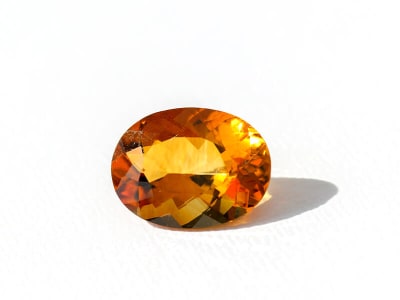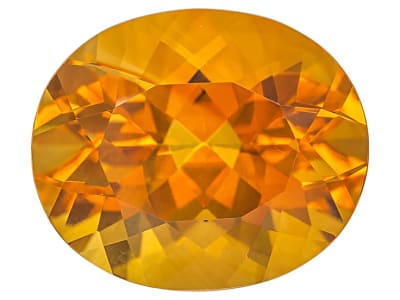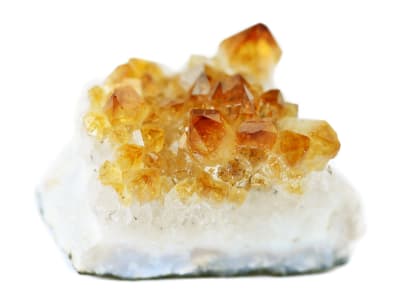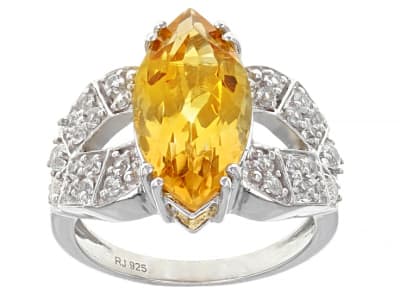Citrine is the light to medium yellow and golden to reddish brown variety of quartz. It gets its name for the French word citron which means lemon. Most of the citrine on the market is heat-treated amethyst or smoky quartz. Citrine owes most of its color to the ferric iron within the host material. The term madeira which is the Brazilian word for wood, or wood colored, is applied to stones with a warm yellow or orange color.
General Information
Tolerance:very constant
LWUV: Inert
Citrine Colors
-
 Bi-color
Bi-color -
 Brown
Brown -
 Orange
Orange -
 Yellow
Yellow
Alternate Names
Madeira Citrine
Countries of Origin
Tanzania, United Republic Of; Russian Federation; Uruguay; Belize; Madagascar; Thailand; Bolivia (Plurinational State of); India; Mozambique; Unknown; China; Namibia; Brazil; Nigeria
History
It's like owning a piece of the setting sun. Such rich and golden light! Citrine is one of the most popular gemstones in the quartz group. Its excellent transparency and inimitable golden color (which comes from iron) makes it a favorite. It typically grows close to its sister stone, amethyst, and is sometimes found in beautiful mandarin-orange and madeira-red hues. There is evidence that suggests the heat from magma activity naturally transforms some amethyst or smoky quartz into citrine. We pay homage to mother nature in that many of the citrines on the market are heat-treated amethyst or smoky quartz.
Care
Citrine is a member of the quartz family and a 7 on the Mohs scale of hardness. It's a sister stone to the popular amethyst and is very wearable. Clean it with warm water, mild soap, rinse thoroughly and dry with a soft cloth.

More About Citrine
It's believed by some that citrine repels negative energy. That would make it ideal for people who are concerned about negative energy in their environments. And truly, this sunny golden stone must surely radiate good things! In fact, some people believe that citrine carries the powers of the sun. One of our favorite bits of folkloric information is that when life's inevitable disasters strike, citrine helps you "pick up the broken pieces", start fresh, and feel sunny again.
Species/Variety
Madeira Citrine
The Madeira name comes from the Brazilian word meaning ‘wood’ or ‘wood colored’. Most madeira citrine comes from heating amethyst with a brownish core to get the warm yellow or orange color. The primary sources come from the Brazilian state of Rio Grande do Sul, Uruguay, Zambia, and Madagascar.




